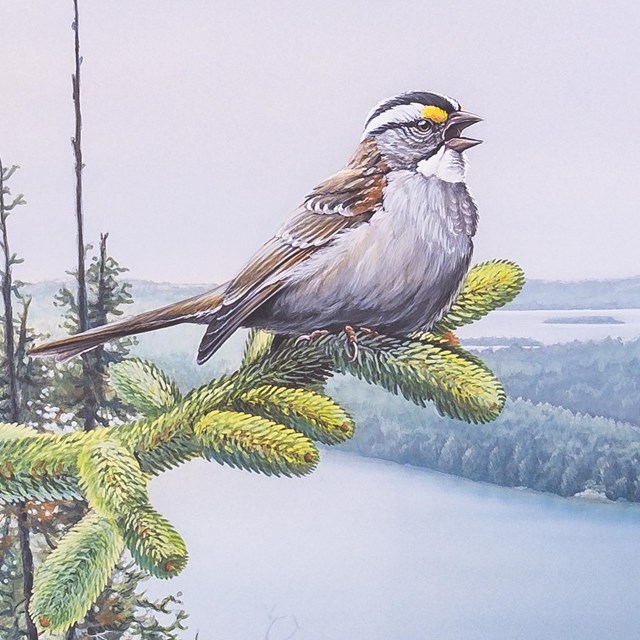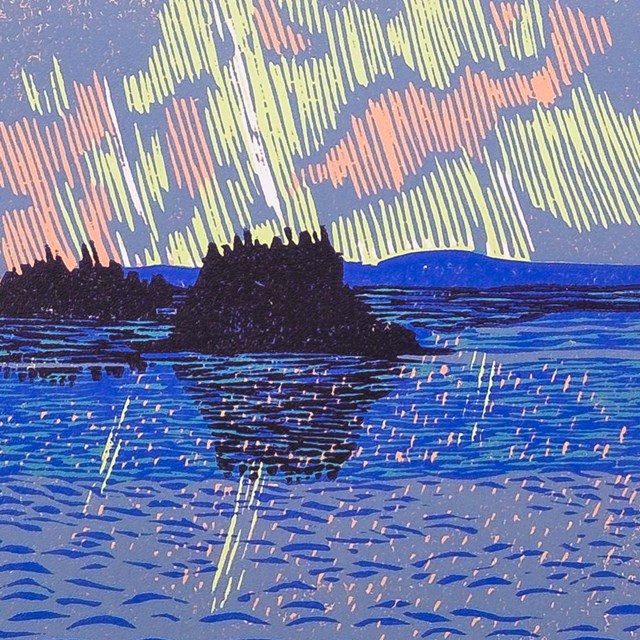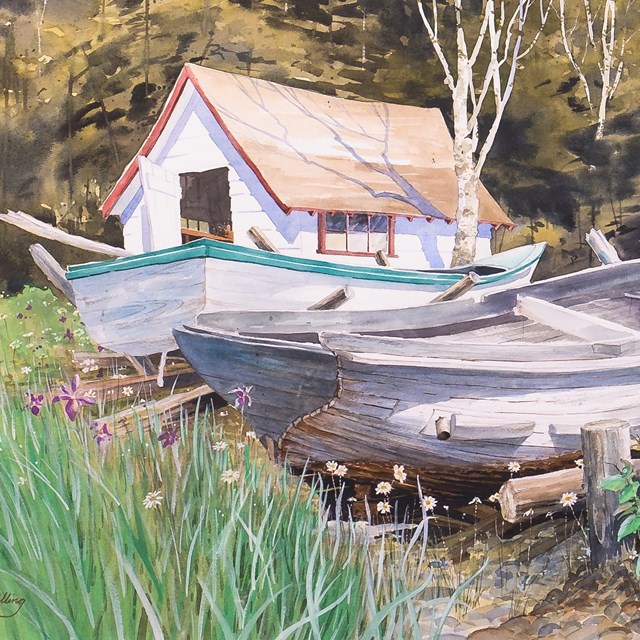Experimenting with a New MediumI spent much of my time during my residency on Isle Royale experimenting with a new medium: cyanotyping! Cyanotypes, sometimes called sun prints, are made by coating paper (or other materials) in a photosensitive chemical. The image is then creature by laying objects or drawings down onto the paper, and exposing the sensitized paper in the sun. The chemicals exposed to the sunlight turn into an insoluble blue pigment called Prussian Blue, and areas blocked from the sun remain soluble, to later be washed away and return to the white of the paper. There were some definite challenges in trying out this medium for the first time in a little cabin with no electricity or running water—my process ended up including prepping the paper by candlelight in the evenings, and lugging many buckets of water up from the lake to rinse the prints—but it was a great way to document some of the amazing plants on the island. Isle Royale is home to over 40 endangered and threatened plant species, many of which are arctic disjuncts. These are plants whose main ranges are further to the north, but have managed to eke out a habitat far from home along the rocky shore of Lake Superior. As the glaciers retreated across North America some 12,000 years ago, newly exposed land became available for colonization by opportunistic arctic plants that could withstand the harsh conditions. As their habitat shifter further north with rising temperatures, so too did the arctic plants, However, some small populations of the arctic species stayed behind, thriving in habitats least desirable to other plants: peatlands, bare cliffs, and around cold lakes such as Lake Superior. The descendants of these plants are present on Isle Royale today, as living relicts of the geologic past of the region. One such plant is Bilberry (Vaccinium ulginosum), also known as Alpine blueberry. This diptych includes an in situ cyanotype taken of a plant on Scoville Point, Isle Royale, and an accompanying botanical portrait of the plant in watercolor. Select Entries from the Artist's Logbook07/25/21 07/28/21 07/30/21 08/02/21 
About the ArtistAlex is a Canadian scientific illustrator living in Chicago. After studying geology and studio art at Vassar College in New York, Alex worked at the Smithsonian’s National Museum of Natural History, where she conducted research on whale evolution. Articles on her research have appeared in the New York Times, BBC News, Nature, and the Washington Post. As an independent scientific illustrator, her clients have included the American Museum of Natural History, Woods Hole Oceanographic Institute, Stanford University, and Duke University Marine Lab. Alex also writes and illustrates picture books, and teaches art classes in Chicago. You can view more of Alex Boersma's work on the artist's personal webpage.
|
Last updated: December 17, 2025



